Search Results

Alexandra
My dad was diagnosed with leukemia this past fall. Our family was left in utter shock as my dad was the epitome of health his whole life. From our yearly ski trips, hiking and biking excursions, and running four marathons (motivating me to run my first with him), there was nothing he couldn’t do. He still continues to be the strongest man I know five months into his battle. He continues to face every day with a smile on his face and his head held high.

Stephanie
Ever since I saw my dad run the New York City Marathon in 2019, I knew it was something that I wanted to strive toward. When the pandemic hit in 2020, I put that dream on pause to start a full-time job as a clinical research coordinator for bone marrow transplants.

Melissa
I want to tell you about my hero, my wife, Melissa. She is service-focused from the time she gets out of bed until the time she returns. She's been a part of Team In Training for the past three years and has raised well into five figures to help others. That's what made her Hodgkins lymphoma diagnosis all the more ironic.
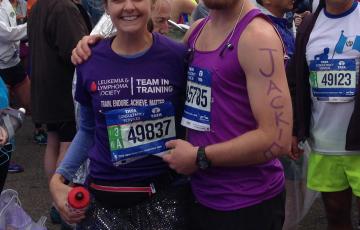
Jacqueline
After a year of misdiagnoses, I was diagnosed with stage 3 Hodgkin lymphoma (HL) on Valentine's Day 2007 when I was 22 years old. I had to take medical leave from my senior year of college to move home with my parents to undergo treatment in Albany, New York. After seven months of chemo, I was in remission and have been since!

Virginia
Last August I was diagnosed with stage 2A Hodgkin lymphoma (HL). I was going into my senior year, but instead of going to my first day of school, I had to go to my first day of chemotherapy. In October, after two full cycles of chemo, I got to ring my cancer-free bell and begin my recovery process. Today, I am in the process of growing back all my red hair and training to play Division One soccer at George Mason University in the fall.
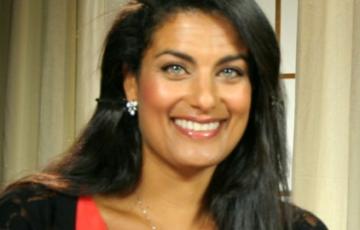
Christine
Christine Attia knows first-hand how overwhelming and terrifying a blood cancer diagnosis can be. She lost her 27-year-old fiancé three years ago after a courageous six-month battle with acute myeloid leukemia (AML), a blood cancer which has seen few improvements in treatments in more than 40 years.

Champions in myeloma research, Part 2: A conversation with Suzanne Lentzsch, M.D., Ph.D.
To commemorate both Myeloma Awareness Month and Women’s History Month during March, I’ve been talking with LLS-funded women scientists who are driving discovery for myeloma patients. As we close out the month and my two-part series on myeloma researchers, I’m excited to share my recent conversation with Suzanne Lentzsch, M.D., Ph.D., Professor of Medicine and the Director of the Multiple Myeloma and Amyloidosis Program at Columbia University.
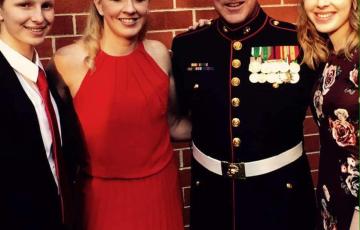
Yarnall Family
To be of service to others comes naturally to the Yarnalls. Bob is a 25-year Marine Corps veteran and a teacher. Kim is a chiropractor for over 22 years.
BRIDGE (Blood cancer Research Initiative Developing Greater Engagement) with community patients
The Weill Cornell Medicine (WCM) Meyer Cancer Center (MCC) has an internationally recognized, clinical/translational blood cancer research program focused at its Manhattan campus. Elsewhere in New York City, the borough of Queens has 2.3 million and the borough of Brooklyn has 2.5 million residents. Both are among the most ethnically diverse urban areas in the world, and each separately ranks just behind Los Angeles and Chicago in population. Over 50% of patients diagnosed with blood cancers in New York City live in Brooklyn or Queens, and half of those are non-white.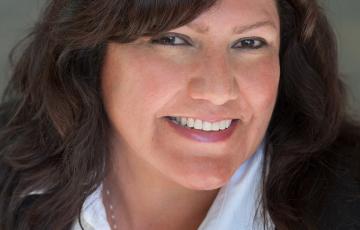
Diana
My introduction to The Leukemia & Lymphoma Society (LLS) began in the early 2000s. I joined a Light The Night Team to support research and programs for cancer patients. I then discovered Team In Training and ran my first marathon and my second as a Team Mentor. At the time, I knew cancer was a terrible disease, but it wasn’t until 2012 that cancer became more personal. In May 2012, my cousin Richard, who was like an older brother to me, passed away from pancreatic cancer. Just two years later, my mother was diagnosed with breast cancer.
Gina
I was diagnosed with CML on May 25, 2010. Up until December 16, 2013 my disease was managed by oral chemo, then unexpectedly, I went into a blast crisis and progressed to acute lymphoblastic leukemia (ALL). I was told that I may not live to the end of the year unless an aggressive regimen of in-patient chemo, administered at the University of Pennsylvania hospital, was able to slow the proliferation of blast cells. Thankfully, the chemo worked and I began the preparation for a stem cell transplant. I had the stem cell transplant on May 1, 2014.
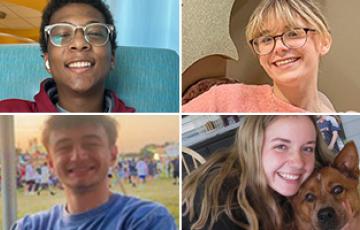
Moving Forward: 4 Young Blood Cancer Survivors Look Ahead
Blood cancer survivors have a unique path ahead of them—and that can feel challenging.
Questions come up: Does treatment mean I have to pause everything? Do I tell my friends or coworkers (and how)? With my medical bills, how can I afford the education I want?

Kendra
I first learned of The Leukemia & Lymphoma Society (LLS) when I participated in a Team in Training (TNT) event to walk a half marathon in San Francisco in October 2004. My friend in Michigan had lost her dad to lymphoma earlier that year, and she was training for the event from her home in Michigan. My training and participation were a way to support her during the loss of her dad. I never thought I could walk that far, and, through the support of the trainers and the motivation to support my friend, I had an awesome time completing that walk.
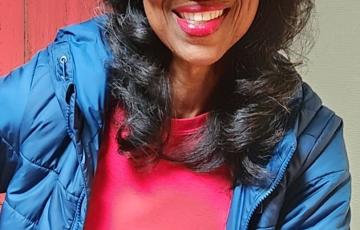
Jennifer
Jennifer of Hayward, CA, was diagnosed with myeloma (MM) in 2008. During this process, she endured a year of intense chemotherapy, followed by an autologous stem cell transplant where her own stem cells were harvested and reintroduced into her body on January 8, 2010. This resulted in an extended hospital stay followed by radiation treatments. She is currently in remission and remains under doctor’s care. After her diagnosis and treatments, she wanted to give back to others living with the disease.
Integrative Medicine and Complementary Therapies
Integrative medicine (IM) is a form of medical therapy that combines practices and treatments from complementary medicine (yoga, acupuncture and massage) with conventional medicine (surgery, chemotherapy, radiation treatment and immunotherapy). Many cancer patients are using integrative medicine (IM) to help ease their cancer symptoms and reduce the side effects of cancer treatment. By integrating complementary therapies into conventional treatment plans, healthcare providers are better able to address the physical, emotional and spiritual needs of their patients.

Helping Survivors Lead Longer Better Lives
Late last year I had the privilege of attending a special screening of the documentary American Symphony. The film chronicles the experiences of writer Suleika Jaouad and her husband musician Jon Batiste after learning that her acute myeloid leukemia (AML) had returned after years of remission. The movie shows how the couple navigates uncertainty, treatment, and their new normal afterwards.

Deborah
I am a 54-year-old mother of two, the owner of a small business, Park Hill Yoga and have been married for 22 years. Being diagnosed with Hodgkin lymphoma in December 2015 came as the biggest surprise of my life.
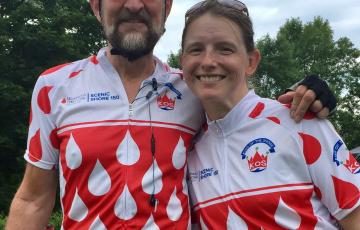
Paul
I have been very active with The Leukemia & Lymphoma Society (LLS) for over 20 years including serving on the Wisconsin Chapter Board and Leadership Development Committee, fundraising for virtually all of the campaigns, patient mentoring, and advocacy leadership. When sharing my story and motives for involvement in “the early years,” I always qualified it by stating that I was motivated not to help myself but to pay it forward and hopefully contribute to improving the quality and quantity of life for future patients and families.
Cancer-Related Fatigue
Fatigue is very common in patients with blood cancers. Cancer-related fatigue (CRF) is characterized by excessive and persistent exhaustion that interferes with daily activity. CRF often begins before cancer is diagnosed, worsens during the course of treatment and may persist for months—even years—after treatment ends.

5 Reasons Why I’m Grateful for LLS Volunteers
It’s National Volunteer Week, and I want to thank all our LLS volunteers for the time, energy, and commitment you give to our organization in service of blood cancer patients and their families. Through your many acts of kindness, compassion, and generosity, you are helping patients live longer, better lives. All of us at LLS are so grateful for you—all year long.
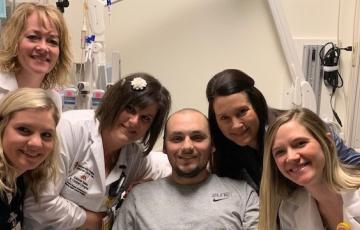
Why We Love Nurses (And You Should Too!)
It makes sense that at diagnosis and throughout treatment, someone diagnosed with a blood cancer will look around them for answers or support.
Coping Tips for Parents
Throughout your child's illness, you'll be focused on comforting your child and helping him or her cooperate with treatment. You may also need to explain what's happening to your other children, answer relatives' questions and perhaps make alternate arrangements for work and childcare. All along the way, you'll be coming to terms with your own feelings and choices.

Jamie
After he was diagnosed with blood cancer in 2013, Jamie was told by doctors that he’d never walk again, let alone ride a bike. Despite those predictions, he finished a 540-mile ride in June 2019 to raise money for The Leukemia & Lymphoma Society (LLS).
Eliot
It was my senior year of high school, and I was thriving: MVP of the soccer team that went to the state finals; strong academics with an offer to study Natural Sciences at Durham University, one of England’s finest; fantastic friends who were to become even more important to me. My biggest challenge was getting a date for the prom! Things that were within my control were going really well. However, things outside of my control then flexed their powerful muscles, and that high school life ended and a new one began.
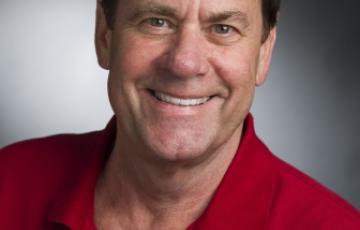
Jack
Jack is a particularly big fan of the Leukemia & Lymphoma Society. His is an active Patient Advocate managing a local support group for patients and caregivers interested in his rare blood cancer, he participates in LLS' First Connection program, has helped with LLS' Team in Training and Light the Night recruiting efforts. He received LLS' appreciation award "For Outstanding Commitment and Support of Advocacy and Patient Quality of Life" in June 2104.